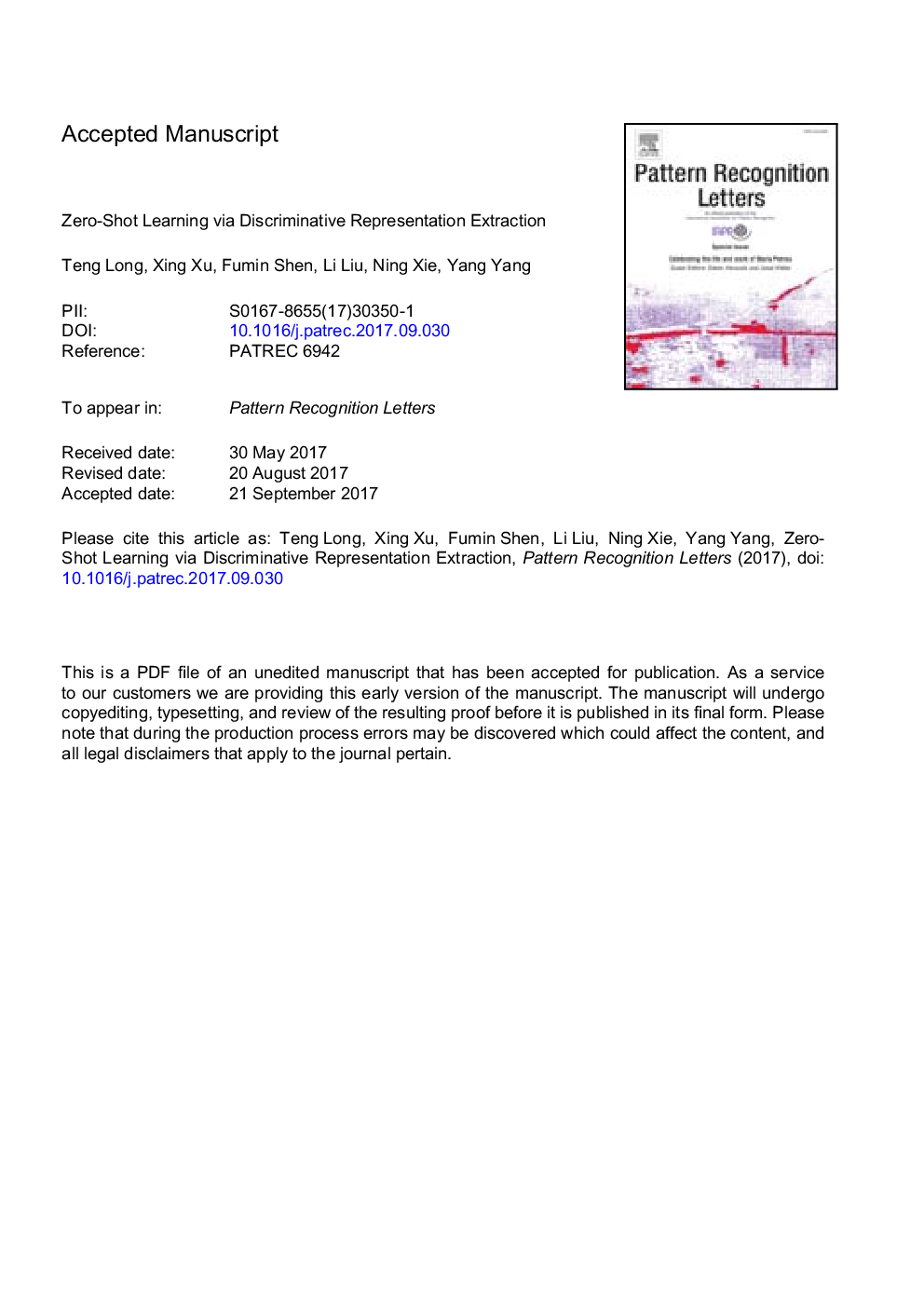| Article ID | Journal | Published Year | Pages | File Type |
|---|---|---|---|---|
| 6940288 | Pattern Recognition Letters | 2018 | 11 Pages |
Abstract
Zero-shot learning (ZSL) aims to recognize classes whose samples did not appear during training. Existing research focuses on mapping deep visual feature to semantic embedding space explicitly or implicitly. However, ZSL improvements led by discriminative feature transformation is not well studied. In this paper, we propose a ZSL framework that maps semantic embeddings to a discriminative representation space, which are learned in two different ways: Kernelized Linear Discriminant Analysis (KLDA) and Central-loss based Network (CLN). KLDA and CLN can both force samples to be intra-class aggregation and inter-class separation. With the learned discriminative representations, we map class embeddings to representation space using Kernelized Ridge Regression (KRR). Our experiments show that both KLDA+KRR and CLN+KRR surpass state-of-art approaches in both recognition and retrieval task.
Related Topics
Physical Sciences and Engineering
Computer Science
Computer Vision and Pattern Recognition
Authors
Teng Long, Xing Xu, Fumin Shen, Li Liu, Ning Xie, Yang Yang,
